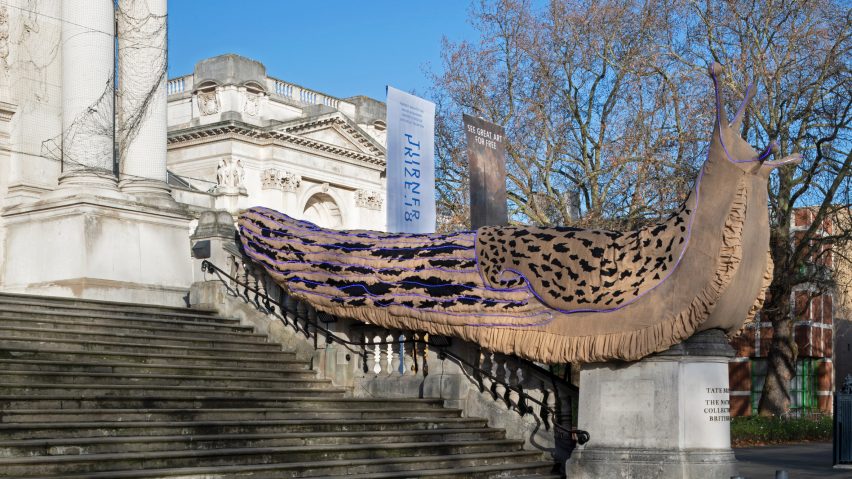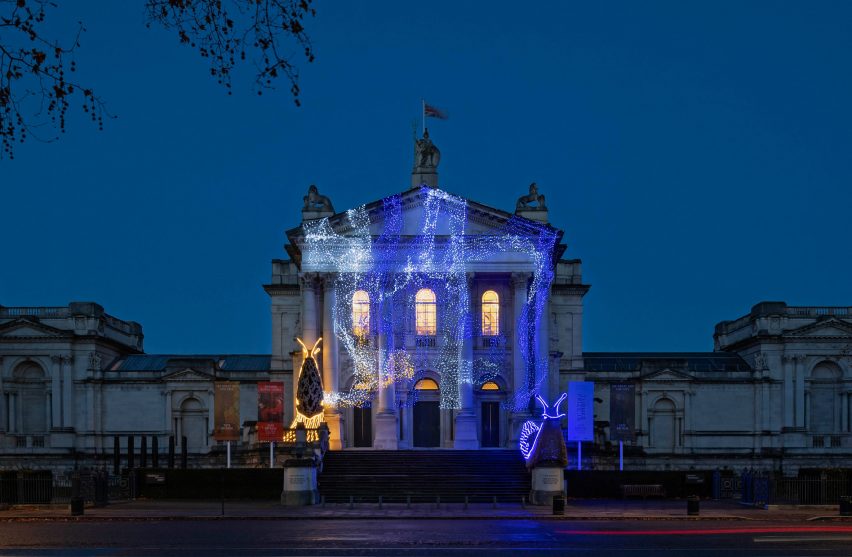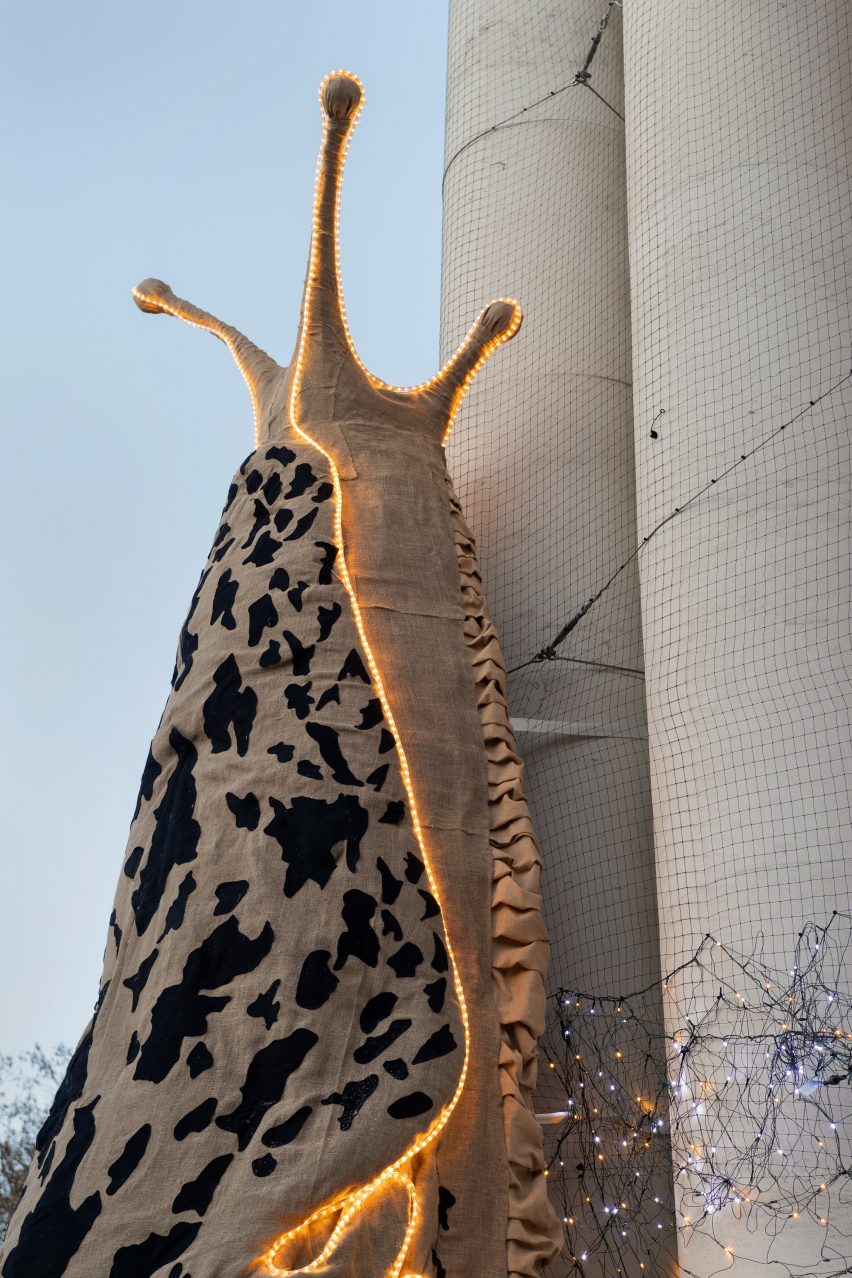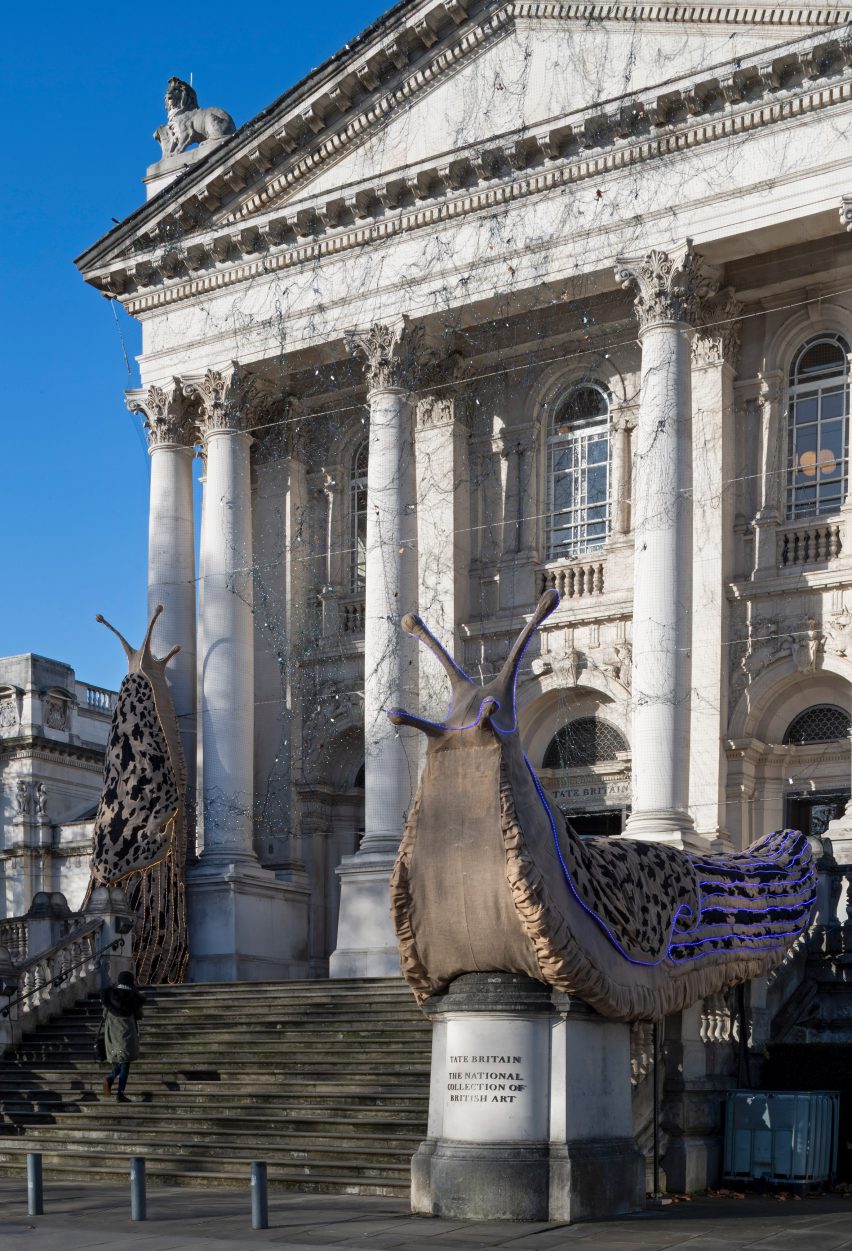
Monster Chetwynd illuminates Tate Britain with giant glowing slugs
British artist Monster Chetwynd lights up London's Tate Britain gallery with giant leopard slugs and their glowing slime trails, in a bid to spark conversation about our unsustainable use of energy.
Artist Alalia Chetwynd, who goes by the name Monster Chetwynd, marks the start of the winter season by illuminating the facade of Tate Britain with a series of LED-covered slugs.
Measuring over 10 metres long, each giant gastropod sculpture has been made from compostable materials, including wood, wicker, hessian and felt, with the intention of each element being recycled at the end of their three-month display.

The artist was inspired to create the installation after seeing the mating rituals of leopard slugs on a television documentary series called Life in the Undergrowth by British broadcaster and natural historian David Attenborough.
As the documentary explains, these slugs reproduce by slithering up a tree and hanging from a branch by a glittering thread of mucus. The ritual typically takes place at night, as the slugs entwine the tube-like growths from their heads together, which glow blue as they mate.

Swathes of blue, white and yellow slug trails made from energy-efficient LED ropes cover the building's late 19th-century facade to emulate this natural phenomenon.
"Through these otherworldly slugs and their hypnotic mating rituals, Chetwynd reminds us that the darkness of winter can be a time of renewal and rebirth," said the Tate.
"As light fades, many animals slow down and take shelter, often fattening up and hibernating, knowing that life and light will be restored after the darkness," it added.
The use of light reflects Chetwynd's interest in alternative energy sources. For instance, the potential of bioluminescence – the light produced and emitted by living organisms such as squid and fungi – to be used to power electric street lights in cities.
Unable to use bioluminescence herself, Chetwynd used these sustainable textiles and lights to transform creatures commonly considered as "ugly" and "repulsive" into a "wondrous and ethereal spectacle", in the hope of creating a fun and engaging way to spark conversation about where we source our energy from.

According to the artist, these light trails were also used to reference other bioluminescent animal life, such as plankton found in the ocean, as well as stars and galaxies.
Back in 2014, Dutch designer Daan Roosegaarde also proposed using the bioluminescent bacteria found in jellyfish and mushrooms to create glow-in-the-dark trees that could replace street lights.
This led him to create an installation called Glowing Nature, which demonstrates the potential of using bioluminescent algae as a natural light.
Chetwynd's outdoor slug installation will be on display at London's Tate Britain gallery until 28 February 2019.